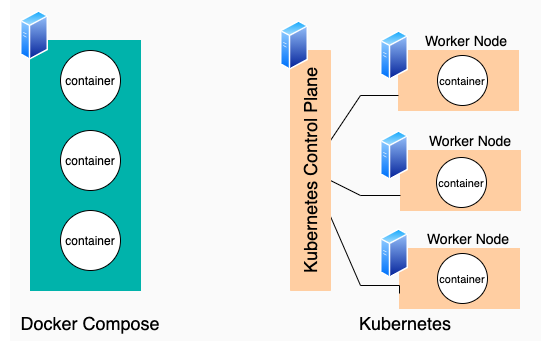

- #Docker and kubernetes for java developers how to
- #Docker and kubernetes for java developers full
- #Docker and kubernetes for java developers software
This means that we should start by using an appropriate Java Runtime Environment (JRE) for your production image and not the complete Java Development Kit (JDK). When creating a Docker image, we should only assign the necessary resources to function correctly. Another consideration is to build with jib which will create a minimal Java image that does not require a Dockerfile.

A smaller Docker image also means a smaller footprint and, most likely, a faster startup time. Next to the security aspect, a minimal base image will reduce your newly created image’s size. Binaries that you do not have cannot harm you. Building your new Docker Java image for your application is preferable based on a minimal base image.
#Docker and kubernetes for java developers full
You probably do not need all the binaries that come with a full operating system. We can conclude that choosing the right base image is critical from a security perspective.

In our earlier 2019 research, Shifting Docker security left, we already showed that the vulnerabilities brought in by the OS layer can vary largely depending on the flavor you choose. Looking at base images, many of the vulnerabilities are part of the Operating System (OS) layer this base image uses. When a base image has a vulnerability, you will inherit this in your newly created image. The base image you choose is essential because it allows you to utilize everything available in this image. The base image is the foundation of the new image you are about the build for your Java application. When creating a Docker image, we make this image based on some image we pull from Docker Hub. Choose the right Docker base image for your Java application Finally, containers allow developers to experiment more easily with new platform releases or other changes right on their desktops without requiring special permissions.
#Docker and kubernetes for java developers software
These images are defined in software allowing for complete repeatability in their creation and giving developers a way to run the same platform in all environments. This is useful to avoid synchronizing binaries, build artifacts or git metadata.Packaging your Java application in a container allows you to define your complete application, including the JRE, configuration settings, OS-level dependencies, and your build artifacts into self-contained deployable artifacts called container images. stignore file to indicate which files shouldn't be synchronized to your development container.

command: the start command of the development container.More information on development images here. image: the image used by the development container.name: the name of the Kubernetes deployment you want to put on development mode.
#Docker and kubernetes for java developers how to
This file defines how to activate a development container for the Java Sample App: Image : okteto/gradle : 6.5 command : bash Get a local version of the Java Sample App by executing the following commands: Maven ) while developing your application directly in Kubernetes. ) or IDE debuggers (Eclipse, IntelliJ, VS Code. You will be able to take full advantage of tools like Maven, Gradle, dependency caching, popular frameworks hot reloads (Spring Boot, Quarkus, Micronaut. On this blog post, we will show you how Okteto improves the developer experience in Kubernetes for Java developers. Okteto was created to solve this problem. This flow is not only slow, but it also prevents us from benefiting from standard features of Java tools such as fast incremental builds, automatic hot reloads or powerful debuggers. The typical development workflow looks like this: write code, build a Docker image, push it to the registry, redeploy, validate your changes, rinse and repeat. It has rapidly become the standard to run production workloads and the community around it is just great!īut developing in Kubernetes presents some challenges. Kubernetes is an open-source project for automating deployment, scaling, and management of containers.


 0 kommentar(er)
0 kommentar(er)
